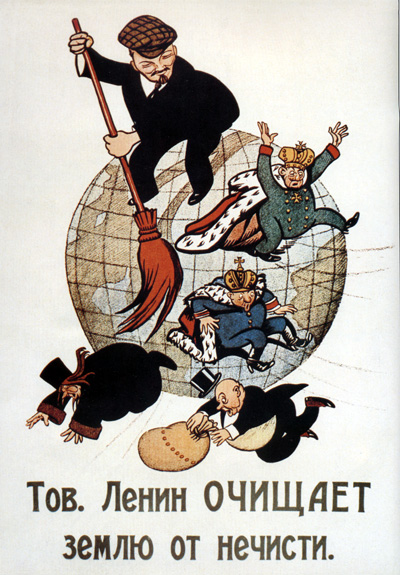Andry’s Rebellion, also known as the German Coast Uprising, was a slave revolt that occurred in the Territory of Louisiana between January 8th and 10th, 1811. The revolt, the largest servile uprising in United States history, was named after the owner of the plantation, Manual Andry, where the uprising originated. At its peak on January 10, it involved approximately 400 to 500 enslaved men and women along the east bank of the Mississippi River north of New Orleans. Led by a Saint-Domingue-(Haiti) born slave named Charles Deslondes, the uprising was inspired by the Haitian Revolution of 1791. Slaveholders also feared a Haitian-style uprising partly because blacks outnumbered whites in the region by a ratio of five to one, and in particular because of the large population of free blacks in the area that they assumed would help and support such a revolt.
The slave rebellion begin on January 8, 1811, at the Andry plantation in St. John the Baptist Parish when approximately 15 slaves attack plantation owner Manual Andry, wounding him. Despite his wound, Andry escaped and warned whites on surrounding plantations. Rebels also killed his son, Gilbert Tomassin Andry, around the same time.
The rebels then crossed into St. Charles Parish, headed to New Orleans and as they marched, their numbers grew. According to eye witness accounts at the time, the rebels marched in military style while beating drums, waving flags, and armed with pikes, hoes, axes with a few carrying firearms. Enslaved people from other plantations joined the Andry plantation rebels increasing their ranks to up to 500 people. While in St. Charles Parish they killed Jean Francois Trepangnier, another plantation owner. As the rebellion unfolded, terrified whites on plantations along the Mississippi River escaped for safety to New Orleans.
William C.C. Claiborne, the territorial governor at the time, called out the militia and imposed a curfew. General Wade Hampton, leader of the militia assembled two companies of volunteers, and eventually with the additional help of regular U.S. Army troops and Navy sailors, the rebellion was finally put down. Nearly 700 soldiers, more men than the number of rebels, broke the resistance on January 10. Rebel leader Charles Deslondes was captured the next day and brutally executed.
By the end of the uprising, the rebels had murdered two whites but more than ninety-five rebels were killed during the uprising and in the retaliation, making the suppression of this revolt the bloodiest in the history of the country. After the rebel slaves were captured, three tribunals were conducted by territorial officials at the Destrehan Plantation in St. John the Baptist Parish, and in Orleans Parish. On January 13, The Destrehan Plantation trial resulted in eighteen slaves being found guilty. All were later executed by firing squads and after their deaths, their severed heads were put pikes along the major roadway to New Orleans to intimidate other black slaves. After the rebellion authorities tightened the restrictions governing the activities of free blacks in Louisiana while freeing some loyal slaves who provided information or who, by serving in the militia, helped crush the uprising.
Hexbear links
- 🐻Link to all Hexbear comms
- 📀 Come listen to music and Watch movies with your fellow Hexbears nerd, in Cy.tube
- 🔥 Read and talk about a current topics in the News Megathread
- ⚔ Come talk in the New Weekly PoC thread
- ✨ Talk with fellow Trans comrades in the New Weekly Trans thread
- 👊 Share your gains and goals with your comrades in the New Weekly Improvement thread
- 🧡 Disabled comm megathread
reminders:
- 💚 You nerds can join specific comms to see posts about all sorts of topics
- 💙 Hexbear’s algorithm prioritizes comments over upbears
- 💜 Sorting by new you nerd
- 🌈 If you ever want to make your own megathread, you can reserve a spot here nerd
- 🐶 Join the unofficial Hexbear-adjacent Mastodon instance toots.matapacos.dog
Links To Resources (Aid and Theory):
Aid:
Theory:


I was reading the NYT update on the LA fires and I came across this quote:
A completely unhelpful visualization. 22,000 football fields means nothing to me. I can imagine, maybe, ten football fields. Maybe I could even roughly understand 100 football fields. But 22,000 might as well be infinite. It would be better to say something like "So far 29,000 acres have burned, an area equal to slightly more than half the size of Baltimore."
"29,000 acres is roughly 14,468,406,523 burgers"
under my breath holy crap...
Are the burgers square patties? Round patties in a regular lattice structure? Round patties that are somehow optimally area filling?
So is this like unprecedented levels of destruction? Cuz that sounds crazy.
LA is 500 square miles. 45 square miles have burned. But the burned areas so far haven't been very densely populated, parts of the city that merge with surrounding forested landscape.
Check out this map from the NYT:
https://www.nytimes.com/interactive/2025/01/08/weather/los-angeles-fire-maps-california.html
I see, I thought it was like…the downtown was burning
That's Altadena you saw in the Eaton fire. It's got city blocks, houses, businesses. More destruction than the Hawaiian town that was destroyed, but fewer lives lost. More significant than Paradise, CA too.
For the modern era, yeah pretty much.
in a major city, yes. the two main fires burning in LA right now have destroyed around 10,000 structures combined and no fires have done nearly that much damage to a major city in decades. a fire in 2018 destroyed 18,000 buildings and practically the entire town of paradise but that was far from any big cities. in terms of area though 29,000 acres probably wouldn't even crack the top 50 biggest wildfires in california history, the biggest one burned over a million acres in a rural part of the state back in 2020